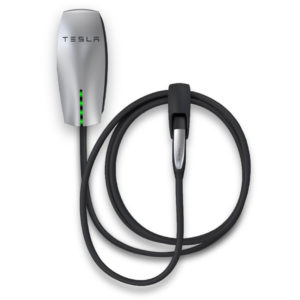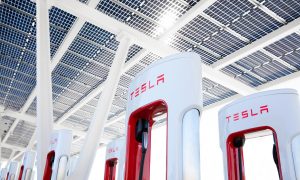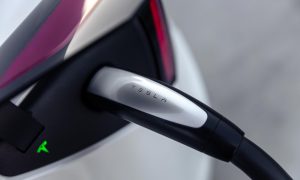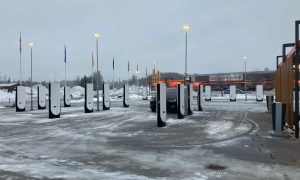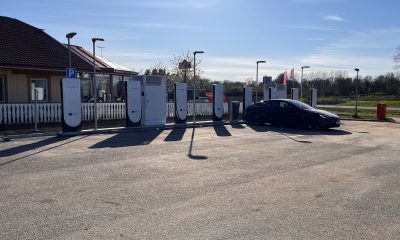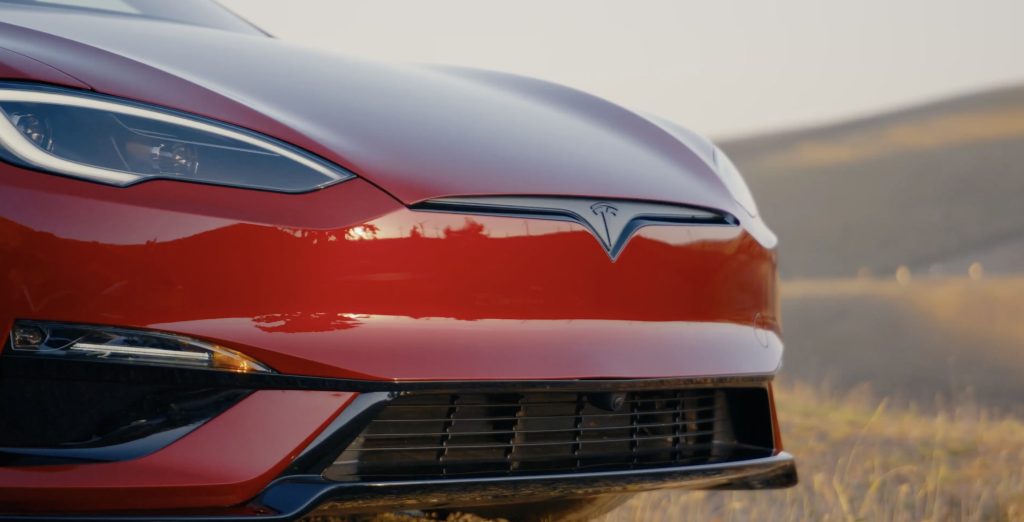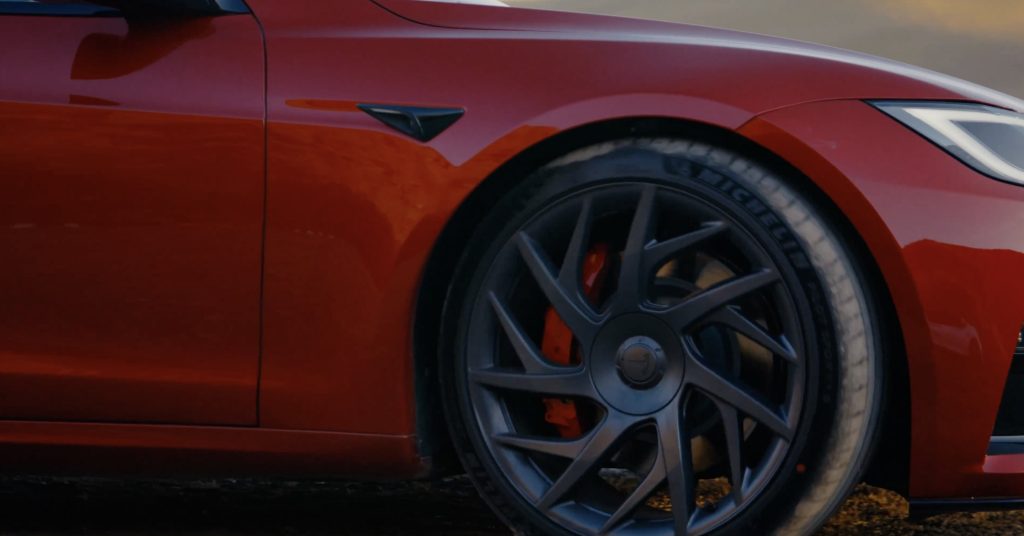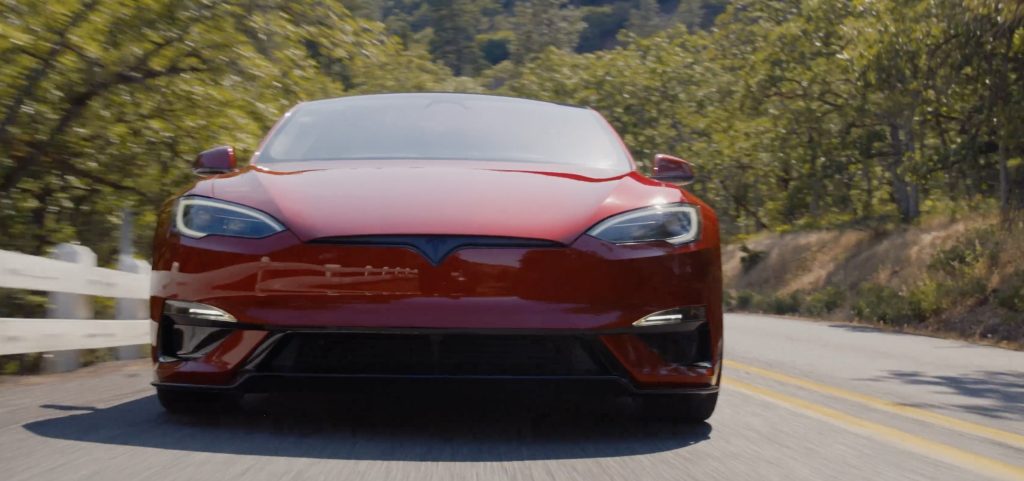Tesla Model S
Every New Tesla Owner’s Dilemma: Dual Chargers vs High Power Wall Connector (HPWC)
An analysis of the HPWC and Dual Charger options for charging the Tesla Model S.
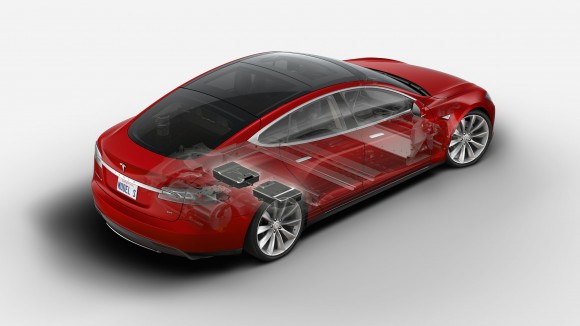
When you purchase a car, you typically buy what’s on the lot and it’s either fully loaded or stripped down with the bare necessities. Custom orders are few and far between. With Tesla you almost always end up configuring the vehicle to your exact specifications. While they do have inventory cars for immediate sale, they’re often used vehicles with a previous life as a service loaner or test drive vehicle.
There are really 3 kinds of buyers for the Model S when it comes to options:
- Those who opt for every available option and price is not a factor.
- Those that go for the bare minimum options and stretch their budgets in order to get into the car. These are the owners with the stripped down Model S 60 kWh’s (or even 40’s!) with no Tech package etc.
- Those that are in between and select only those options that they really need in order to save money.
If you’re in category 3 then read on.
Two points that need to be considered when ordering a Tesla Model S is whether or not the High Power Wall Connector (HPWC) is really for you; a $1,200 option that provides two times the charging rate of the standard option.
The second point to consider is whether you want the on-board dual chargers,
another $1,500 option which allows twice the conversion capacity as the single charger when the power is available.
Originally the HPWC and Dual Chargers were a single option around $3,000 and later on Tesla split the options out. Why they did that is interesting and indicates that there maybe a reason for having dual chargers without the HPWC.
Also see: Should You Leave Your Tesla Universal Mobile Connector (UMC) Plugged In?
I drive a lot: 35K miles per year. Other than a relative who’s a full time truck driver, I drive more than anyone I know. I plan on driving my Tesla just as much. On a daily basis I range from 90 miles to 175 miles in a given day just based on my usual pattern of family shuttling and commuting.
Do you really need the Tesla High Power Wall Connector (HPWC)?
Tesla has a good charging speed calculator on their site. If you take a conservative 200 miles per day and charge on the “standard recommended” home adapter through a NEMA 14-50 outlet, you can replenish the battery capacity in 6 hours 48 minutes. This measure of time is somewhat misleading as Tesla tends to provide “best” numbers and, unlike an ICE car, charging from an empty battery state is faster than charging from 20% left. Assuming you don’t arrive home with 0 miles left, the time to charge could be a bit longer. Most people I know, once home from work, are there for a minimum of 8 hours thereby giving them a significant amount of time to charge up. While Tesla recommends the HPWC for anyone regularly driving over 100 miles a day, I think the guidance is incorrect and the HPWC is not needed for the most part.
That being said, there are possible edge cases where it could be needed:
- On-call type people that can come and go from the charge location with few hours each time and long times away from the charger. Doctors and other professions like that should carefully consider their patterns.
- People that can take advantage of time-of-use metering (discounted off-peak electricity rates) from their electricity provider. Here in Massachusetts you have to consume at least 2,500 kWh per month over a 12 month period to qualify and generally this doesn’t work for homeowners even with high energy consumption. My utilization can run as high as 2,296 kWh/month but this still wouldn’t qualify.
- The HPWC is one way to get a second charging cable. It’s not the most efficient way since a second mobile connector is just over half the price, so you’re better off buying that second mobile connector and leaving it connected in the garage.
- It’s for a business or public use environment. Here people need to come and go as fast as possible. Whether that’s your business or you decided to share your power via PlugShare or the like, then you’ll want to provide the fastest charge possible to get people moving on.
So you don’t need the HPWC. Also don’t forget that the HPWC requires a lot more power and will likely cost more to install than a standard NEMA 14-50. A NEMA 14-50 home installation can run between $1,000-$1,500 but this varies greatly depending on the distance that power lines needs to be pulled and the underlying power supply/infrastructure of your home set up. I was fortunate enough to have mine installed at $675 since, apparently, my infrastructure didn’t require too much of an upgrade.
Tesla Dual Chargers

If you don’t purchase the HPWC option do you really need dual chargers? Personally, unless you never plan on taking an extended road trip or don’t care about future proofing you car, the on board dual chargers could provide some tremdous value. It’s this very same reason why I modified my order at the last minute and added the dual charger option.
At home using a NEMA 14-50 or on the road using only the Tesla Superchargers network (ie, epic 12,000 mile Tesla road trip) you wouldn’t need dual chargers. The dual chargers provides no benefit in each of those scenarios.
However, by having the dual chargers, you’d be able to take advantage of several fast charge options out there while future-proofing your vehicle as public charging technology advances.
- Publicly available HPWC’s out there like those at a Tesla Store or Tesla Service Center or those shared by homeowners and businesses which will grow over time. To take advantage of max charge rates on these you need dual chargers. Not all HPWCs provide more than 40A though.
- Public EV Plugs (J1772) can go up to 70A. The number of these that are over 40A is very limited today but that is rapidly changing. To take advantage of max charge rates on these you need dual chargers.
- CHAdeMO outlets offer higher speed charging for those that can take advantage of them. Tesla has been promising an adapter for a while but has yet to deliver.
While dual chargers are an extra cost on top of an already expensive car, at roughly 1% of the cost of the car and potentially saving hours of frustrating wait time, I think the decision to get dual chargers is a no-brainer and provides some future proofing for the car. HPWC likely always an unnecessary expense.
Thoughts/comments? Would love to hear from you.
News
Tesla confirms massive hardware change for autonomy improvement
Tesla has confirmed that a recent change made to some of its recently refreshed vehicles is, in fact, a strategy it will use to improve its suite as it continues to work toward autonomy.
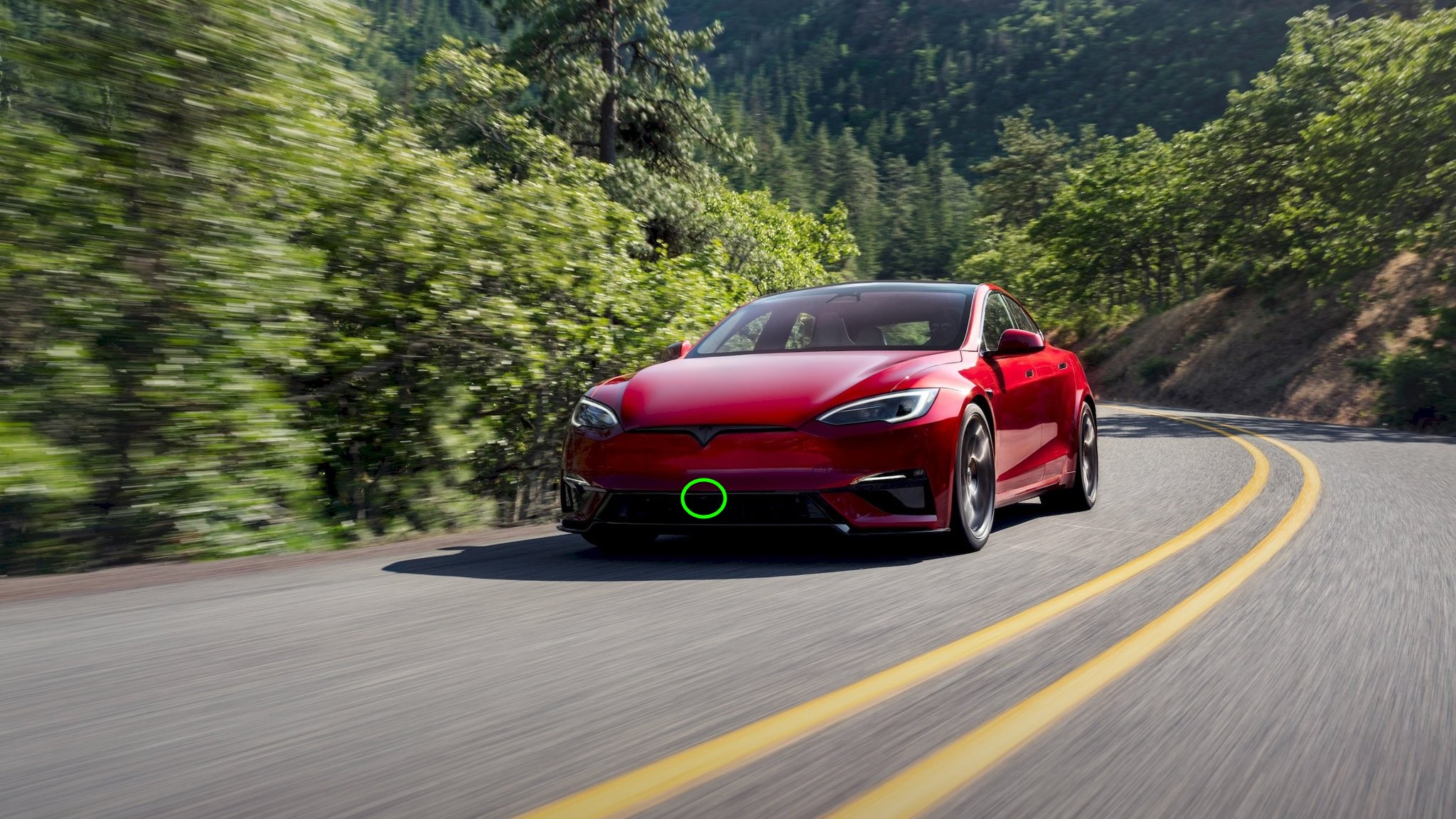
Tesla has confirmed that a recent change made to some of its recently refreshed vehicles is, in fact, a strategy it will use to improve its suite as it continues to work toward autonomy.
Tesla first introduced a front-facing camera on the front bumper with the Cybertruck.
Then, the Model Y “Juniper” received the hardware update. The Model S and Model X both received the front-facing camera with its latest update, which was officially revealed last week.
Tesla used new language with the release of the front-facing cameras on the Model S and Model X, confirming they will assist with several things, including “using Autopilot and Actually Smart Summon capabilities”:
“Enhanced visibility when parking or using Autopilot and Actually Smart Summon capabilities.”
This tiny feature on the new Tesla Model Y is perhaps its biggest addition
This is the first time Tesla has used this sort of language, as it was a completely different description with the launch of the new Model Y in January.
When Tesla launched this vehicle, it said the front bumper camera “provides a wider field of view for automatic assisted driving and advanced Smart Summon.”
Tesla switched from using cameras and sensors to only cameras with the launch of Tesla Vision several years ago. The company’s utilization of cameras comes from Tesla’s belief that Ultrasonic Sensors (USS) are not needed for self-driving efforts:
“Along with the removal of USS, we simultaneously launched our vision-based occupancy network – currently used in Full Self-Driving (FSD) (Supervised) – to replace the inputs generated by USS. With today’s software, this approach gives Autopilot high-definition spatial positioning, longer range visibility and the ability to identify and differentiate between objects. As with many Tesla features, our occupancy network will continue to improve rapidly over time.”
CEO Elon Musk has said that sensors were only a crutch and that self-driving would be solved through the use of cameras:
“When your vision works, it works better than the best human because it’s like having eight cameras, it’s like having eyes in the back of your head, beside your head, and has three eyes of different focal distances looking forward. This is — and processing it at a speed that is superhuman. There’s no question in my mind that with a pure vision solution, we can make a car that is dramatically safer than the average person.”
News
Tesla launches new Model S and Model X, and the changes are slim
Tesla’s newest versions of its flagship vehicles have arrived with some slim changes.
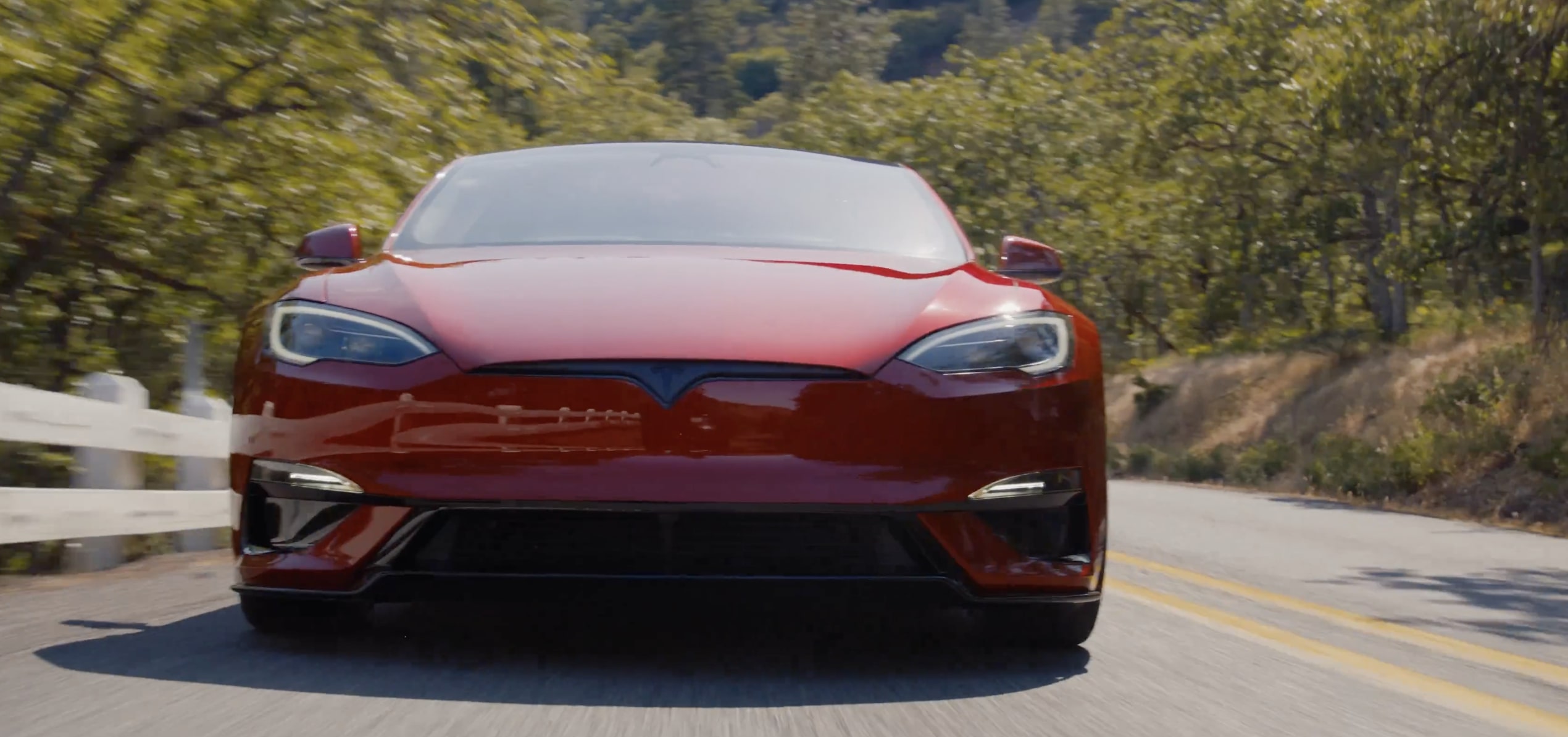
Tesla has officially launched the newest versions of its flagship Model S and Model X vehicles, but the changes are pretty slim, which is something we expected when a couple cars were spotted during public testing recently.
The new “refreshed” Model S and Model X were spotted recently by The Kilowatts, and the changes appeared to be a new front camera, a new color, and only a handful of other changes.
Tesla officially announced the launch of the Model S and Model X on Thursday night, and here’s what it listed as the changes to the two vehicles:
Model S & X are now even better – launching today in the US 🇺🇸
Highlights:
– Frost Blue paint color
– Up to 410 miles of range (Model S Long Range – our longest range Tesla yet)
– Even quieter inside: less wind + road noise & more effective Active Noise Cancellation
– New… pic.twitter.com/i4PcEklOWj
— Tesla (@Tesla) June 13, 2025
- Frost Blue paint color
- Up to 410 miles of range (Model S Long Range – our longest range Tesla yet)
- Even quieter inside: less wind + road noise & more effective Active Noise Cancellation
- New wheel designs & improved aerodynamics = more range
- Front fascia camera for better visibility
- Dynamic ambient lighting that brings unique animations along the dash & doors upon entry
- An even smoother ride thanks to new bushings & suspension design
- Adaptive driving beams
- New exterior styling for Model S Plaid, optimized for high-speed stability
- More space for 3rd row occupants & cargo (Model X)
We expected most of these changes, especially the new Frost Blue paint color, as it was spotted by The Kilowatts in its initial coverage of the cars being spotted a few weeks back. Here’s what it looks like officially:
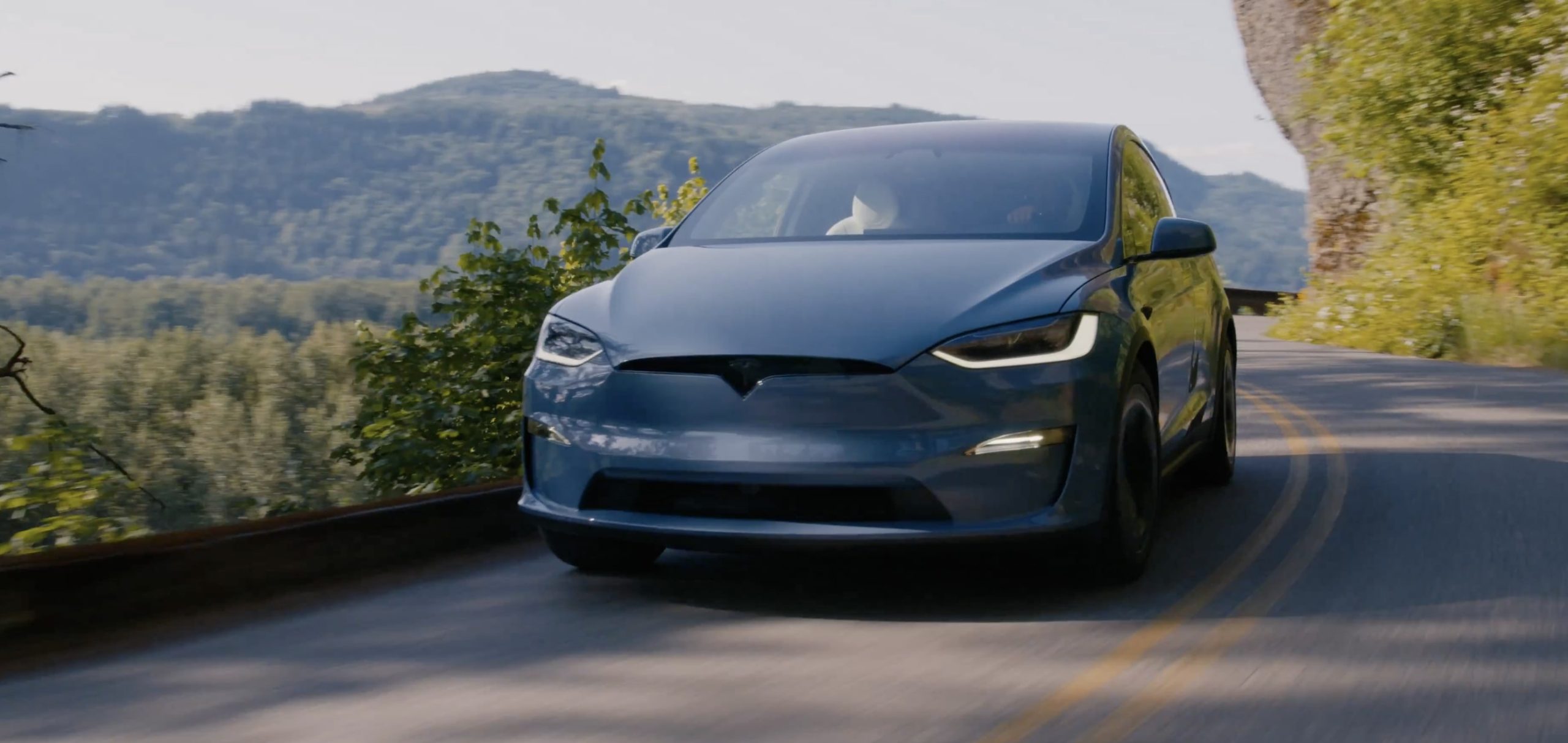
Some of the changes are familiar from the Model Y Refresh, which featured the quieter interior through acoustic-lined glass, a front fascia camera, new bushings, and suspension improvements for a smoother ride.
However, Tesla did refine the Model S Plaid’s exterior for “optimized high-speed stability.” You can see the difference between the two below:
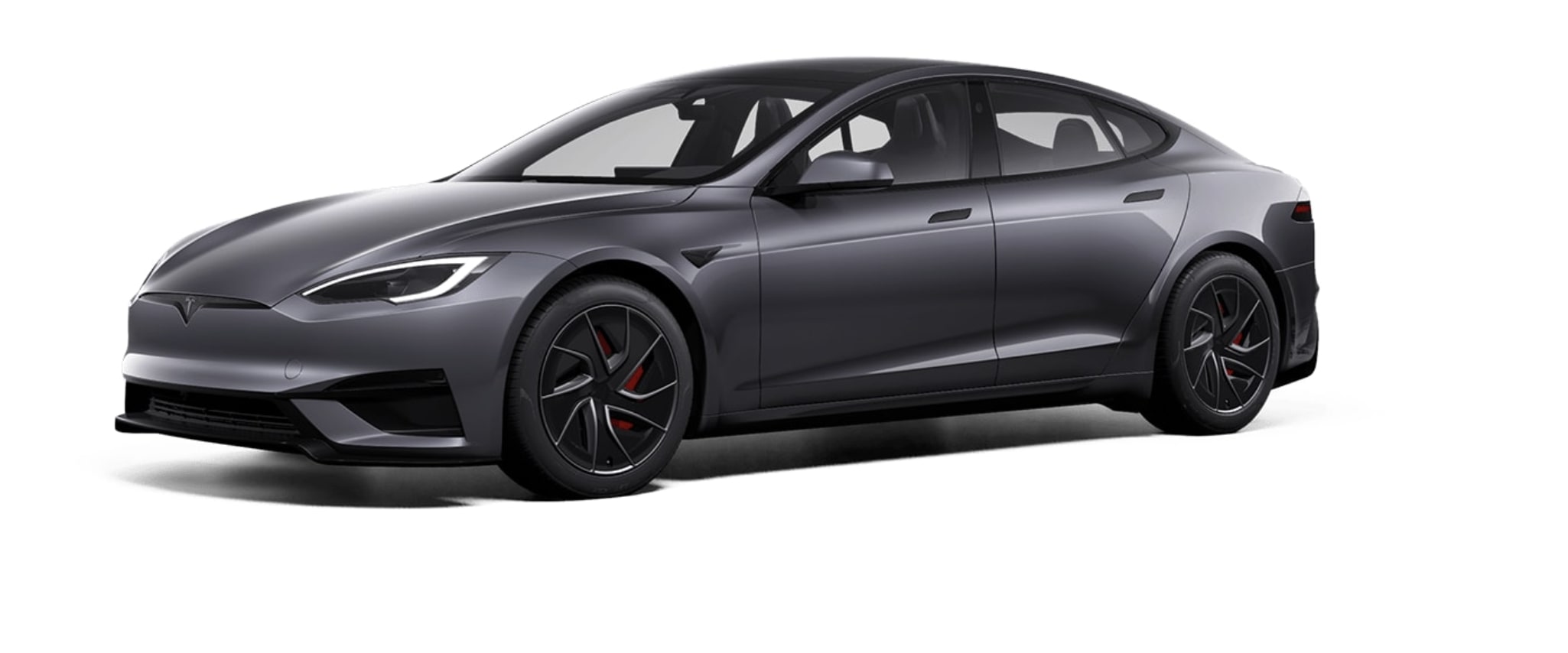
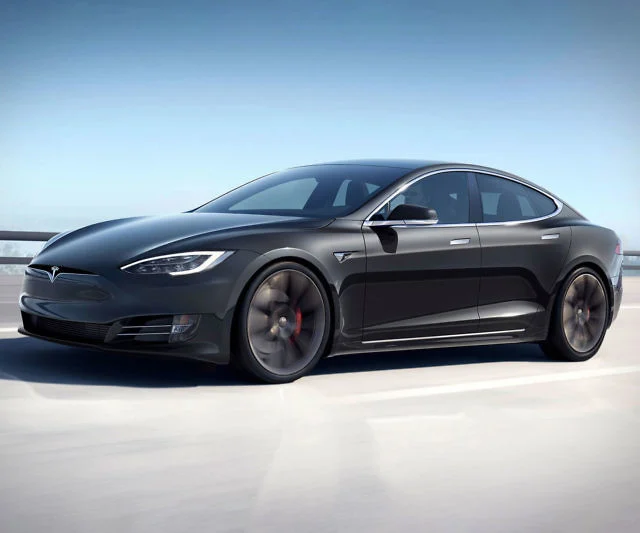
The front-end air diffusers are much deeper, and the front end is more boxy than the previous iteration of the Plaid Model S.
Here are some more images of the Model S that Tesla released in a teaser video:
- Credit: Tesla
Tesla sells such a low volume of the Model S and Model X that it was probably less than likely that the company would put endless manpower and effort into completely redesigning it. CEO Elon Musk said a few years ago that the two cars would only stay in production for “sentimental reasons.”
While they are very special to the Tesla family, they are not incredibly important to the mission of the company.
News
Tesla teases new color while testing refreshed Model S, X
Tesla teased a new color that could be coming to the United States with the new Model S and Model X.

Tesla appears to be teasing a brand new color while it was testing the refreshed Model S and Model X, which was spotted last week in California.
Tesla currently offers six paint options in the United States, but they are all pretty basic. This has not been a problem for owners as wrapping the vehicles is a common practice, but some people would likely see more versatility from Tesla in terms of their standard paint colors.
This is especially relevant as Europe has been able to have both Midnight Cherry Red and Quicksilver, which were, at one time, exclusive to the market.
Quicksilver made its way to the United States, and Tesla did release a new Red last year with “Ultra Red,” but Midnight Cherry Red never made its way outside the walls of Gigafactory Berlin.
Last week, as the first spy images of the new Model S and Model X were taken and released by The Kilowatts, there was a very noticeable difference with the vehicle, as other changes seemed to be relatively underwhelming: a new paint color.
New factory blue, coming soon to a Model X near you pic.twitter.com/3CuN4j1ipq
— The Kilowatts 🚗⚡️ (@klwtts) May 22, 2025
Many believed this was simply a wrap, but Ryan Levenson of The Kilowatts, a former Tesla employee, dispelled that rumor after several questions about it.
He said that this is absolutely a factory paint color and not a wrap:
New color too! If you know what you’re looking for you know that this is factory paint and not a wrap. pic.twitter.com/jBYrimZIQT
— The Kilowatts 🚗⚡️ (@klwtts) May 22, 2025
More images were shared by @supergeek18 on X:
New paint color for Model S/X 🤩 pic.twitter.com/Pb27JruhXs
— Henry (@supergeek18) May 24, 2025
Tesla released a new color earlier this year, but it was just a revision to Black, now called “Diamond Black,” featuring speckles that give a reflection and refraction of light as a diamond would.
However, this new color is certainly quite different than anything Tesla has previously offered in the U.S. before. It is relatively similar to Glacier Blue, a color Tesla launched in Asia. Earlier this year, Franz von Holzhausen, Tesla’s Chief Designer, talked about bringing the color to the U.S.:
“Glacier Blue is just a color that we’ve been talking about with our team — the team is like right through that window by the way — and we were looking at the impact of silver, how do we get pigment into silver and really add a little bit of personality to it. If you look at our palette, you know it was either darks or white, and so we were looking for something in between. Blue is always a fairly popular color.”
It would be a refreshing addition to the options Tesla currently offers, and a breath of fresh air for those who have been wanting a different look altogether.
-

 News5 days ago
News5 days agoTesla Robotaxi’s biggest challenge seems to be this one thing
-

 News2 weeks ago
News2 weeks agoTesla confirms massive hardware change for autonomy improvement
-

 Elon Musk2 weeks ago
Elon Musk2 weeks agoElon Musk slams Bloomberg’s shocking xAI cash burn claims
-

 News2 weeks ago
News2 weeks agoTesla features used to flunk 16-year-old’s driver license test
-

 News2 weeks ago
News2 weeks agoTesla China roars back with highest vehicle registrations this Q2 so far
-

 News2 weeks ago
News2 weeks agoTexas lawmakers urge Tesla to delay Austin robotaxi launch to September
-

 News2 weeks ago
News2 weeks agoTesla dominates Cars.com’s Made in America Index with clean sweep
-

 News2 weeks ago
News2 weeks agoTesla’s Grok integration will be more realistic with this cool feature

